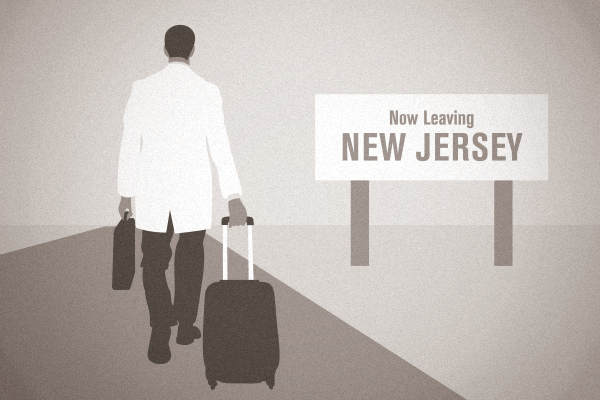Electronic medical records are being adopted at an all-time high. Now 409,839 eligible professionals and providers are getting “federal incentive payments” (i.e. kickbacks from Uncle Sam) for adopting or using an EMR system.
A recent study was published in the Journal of the American Medical Informatics Association that examines the effect of EMR omnipresence. Specifically they were curious what the machines do to working conditions and how they affect stress, satisfaction and burnout among primary care physicians.
How was the study conducted?
The survey results came from 379 physicians dealing with various EMRs in 92 clinics spanning New York, Chicago, Milwaukee, Madison, Wis., and even some rural areas in Wisconsin. The docs took a survey and reported on four aspects:
- Time pressure felt during patient encounters
- Perceived control over workplace issues
- Job satisfaction
- Job burnout
Afterwards, the clinic managers also marked which of 15 common features or functionalities were present in their EMR. From there, the clinics were grouped into three categories:
- Those having the majority of the 15 most common features (50% of the sample clinics)
- Those with a moderate amount (24%)
- Those with a low number of common features (26%)
What were the results?
Researchers compared the physicians’ responses to the clinic’s functionality classification (high, medium or low). Physicians at clinics with moderate-function EMRs experienced significantly more stress than physicians at clinics with low-function EMRs. The medium functioning EMR group had a higher rate of burnout. And here was a weird result: the physicians who operated the high- and medium-functioning EMRs felt less satisfied with their current position overall.
Okay, but what does this mean?
According to lead researcher Stewart Babbott, MD, of the University of Kansas Medical Center in Kansas City, the mid-functioning group having high stress might suggest that these clinics were transitioning. He went on to say, “Our finding that physician-reported stress was highest in the moderate-use group ‘made sense’ for those practices in which some of the functions were on paper and some in the electronic record or for those without a fully functioning EMR.” Fair enough, we’ve said it, too:
“A shoddy EMR is no doctor’s friend; it’s like having a friend you have to explain everything twice to.” – @AtlasMD (Click to Tweet)
And here’s our favorite part. Remember how we’ve been talking about all those boxes that need clicking? The ones that generally don’t do anything? The results showed a significant relationship between time pressure and physician stress in the group with high-functioning EMRs. It was only in this group, too. This suggests that physicians may be particularly pressured for time during patient encounters in the face of a large number of EMR functions. “This ‘made sense’ to us in thinking about the possibility that those in the high-use group had more to do in the EMR,” says Dr. Babbott.
Please, keep in mind that this study suggests CORRELATION and NOT CAUSATION. Dr. Babbott stressed this after the study, saying that further studies are needed to determine the precise relationships.
“Further study is needed to focus on those efforts which can be most specifically related to EMR use,” he says. “If the moderate-use group’s higher stress is due to that practice being in transition between a paper-based system and an EMR, then this work supports stress being an issue to address during that transition. Similarly, if the high-use group’s stress is related to more functions and requirements for each patient’s care, then addressing processes of care and care team support could be of benefit.” (We included this last quote if only to showcase how political this researcher is. We’d recommend better EMRs, too, but that’s just us.)
Unfortunately, there was no mention of Meaningful Use in the study. Strange, right? This is the same legislation demanding more features in the EMR, and incentivizing doctors to implement them. Of course, our perspective outside of the red tape is different than docs still operating within it. But if you ask us, a machine that stresses us out at work, is a machine we’d be happy to get rid of.
